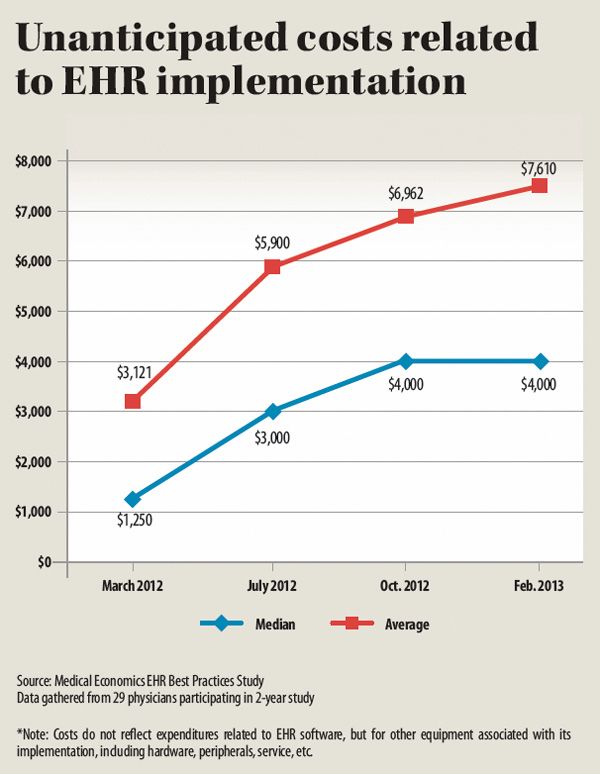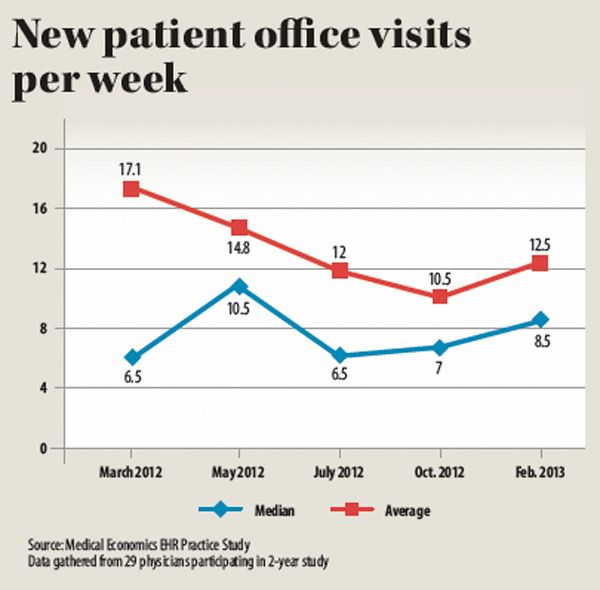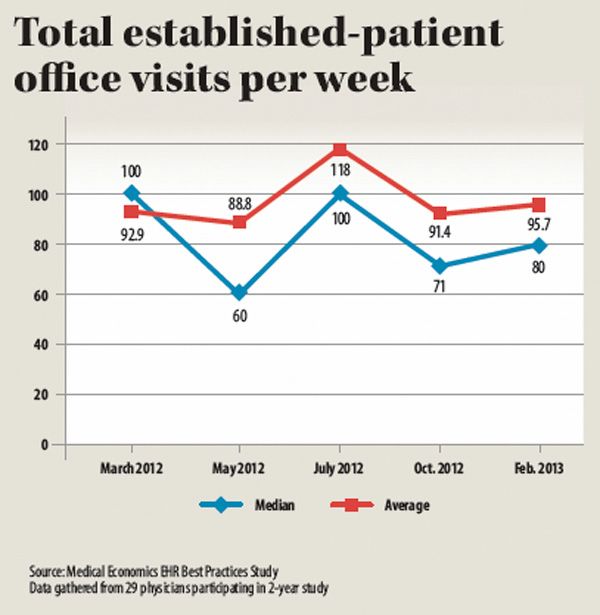Article
How well are physicians adapting to EHRs?
The physicians in Medical Economics' EHR Best Practices Study have checked in once again. See how well they've adjusted to the EHR life.
Progress can be painful. And although that observation has been well-documented when implementing an electronic health record (EHR) system, physicians participating in Medical Economics EHR Best Practices Study are making inroads.
According to data recently gathered as part of the study, the majority of the 29 solo practice doctors participating in the 2-year study have made progress as measured by the core objectives associated with Centers for Medicare and Medicaid Services (CMS) meaningful use EHR incentive programs.
To date, more than 90% of the participating physicians have implemented EHR systems since the start of the study in January 2012. Seven of the doctors in the study have attested for meaningful use.
Here are survey results as they relate to meaningful use objectives after nearly 1 year (full tabulations are itemized in the table on the next page):
Computerized provider order entry:
March 2012: 11%
February 2013: 52%
Drug-drug; drug-allergy interaction checks:
March 2012: 26%
February 2013: 57%
Maintain an up-to-date problem list of current and active diagnoses:
March 2012: 33%
February 2013: 91%
E-prescribing:
March 2012: 52%
February 2013: 86%
Maintain active medication list:
March 2012: 52%
February 2013: 100%
Maintain active medication allergy list:
March 2012: 48%
February 2013: 100%
Record demographics:
March 2012: 44%
February 2013: 95%
Record and chart changes in vital signs:
March 2012: 52%
February 2013: 86%
Record smoking status for patients 13 or older:
March 2012: 48%
February 2013: 100%
Report ambulatory clinical quality measures to CMS/states:
March 2012: 15%
February 2013: 38%
Implement one clinical decision support rule:
March 2012: 15%
February 2013: 48%
Provide patients with an electronic copy of their health information on request:
March 2012: 11%
February 2013: 62%
Provide clinical summaries for patients for each office visit:
March 2012: 7%
February 2013: 67%
Capability to exchange key clinical information among providers of care and patient-authorized entities electronically:
March 2012: 3%
February 2013: 24%
Protect electronic health records:
March 2012: 30%
February 2013: 81%
Incorporate clinical lab test results as structured data:
March 2012: 11%
February 2013: 62%
Provide patients timely electronic access to their health information:
March 2012: 4%
February 2013: 57%
Medication reconciliation:
March 2012: 30%
February 2013: 57%
Summary of care record for each transition of care/referrals:
March 2012: 4%
February 2013: 38%
OTHER FACTORS
Although the progress toward meaningful use has been significant, physicians in the study report working more hours each day to accomplish it. In March 2012, doctor-participants reported a median 40-hour work week, and that number has been steadily climbing to a February 2013 high of 50 hours per week.
Conversely, a significant change in the numbers of total direct patient contact hours per week in the office has not occurred, according to the survey.
The group posted a significant drop in the numbers of patient visits during the timeframe, especially notable as many of the participants began implementation. Also, a steady decline was reported in the average number of new patient office visits from March to October 2012. The February 2013 survey denotes the first increase since March 2012, however. (See the table on page 39.)
Many physicians in the study report being frustrated by the inability to see as many patients each day as usual, at least for the first few months following an implementation.
One of the physicians in the study reports that it took four to 6 months of using the system and entering enough patient data for the practice to return to patient volumes experienced before implementation.
“The ability to see patients in a timely manner was dramatically affected. It was very difficult getting patients into the system,” one physician adds.
“We had a 50% reduced schedule for 2 to 3 weeks, then we had 75% of normal schedule for the next 2 weeks,” one study participant notes.
RELATED COSTS
What has increased are indirect costs associated with the EHR implementation and use. Indirect costs (excluding expenses for the EHR software system) might include computer hardware, peripherals, Internet services, or related supplies.
Although initial surveys in March 2012 noted average expenditures of $3,121, the costs have been steadily climbing to an average of $7,610 as of February 2013.
Andrew Garner, MD, a family medicine physician in Glens Falls, New York, who is participating in the study, reports that dollar figure could even be higher. In fact, his practice spent tens of thousands of dollars setting up his practice’s computer system and related infrastructure to support use of the EHR, he says.
Garner also suggests that physicians closely consider, monitor, and budget those costs when implementing an EHR system for the first time.









